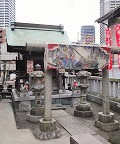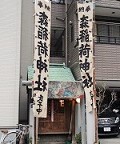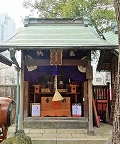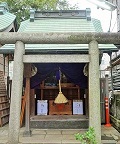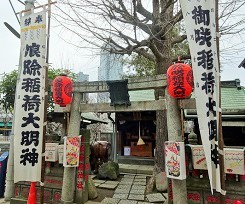
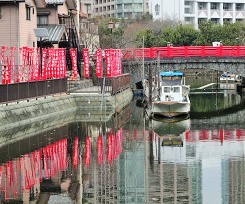

In the former Tsukuda Island area, Inari Shrine is enshrined in three places and four companies.
Part (Kamimachi) is one of the precincts of Sumiyoshi-jinja Shirine, and is said to have been transferred from 1-chome Odenmacho in 1869.
In the second part (Shitamachi), "Mori Inari Shrine" is said to have originated from the Yashikigami, which was enshrined by the Magoemon Mori clan who opened Tsukuda Island.
In the third part (Azumacho), "Nami (Nami) Inari Shrine, O (O) Saki Inari Shrine", where the remnants of the former Ryoshimachi remain dark in the inscription of Tamagaki.
It is unique that two shrines are lined up.
The names of the two shrines are written on the flat of the torii facing the street, and a small torii gate is built in front of Osaki Inari Daimyojin, and the torii is nested.
Every year on the first day of March, or on a Sunday close to this, the first day of the festival is held.
This year is March 13 (Sun).
The lecturer of Sumiyoshi Tsukuda will be in charge of the festival.
In addition to the fried food as a sacred dish, Japanese spiny lobster and red sea bream are also served, lanterns are displayed, and many dedication flags dyed with the name of each shrine are lined up and wrapped in a festival mood.
On the day, 10: 00, Miyaji of Sumiyoshi-jinja Shirine goes around each Inari-sha and executes the repair ceremony.
The sound of children hitting the drums set in front of Inari Shrine echoes throughout the town.
From the left, Irifune Inari Shrine, Mori Inari Shrine, Namiwa Inari Shrine, and Osaki Inari Shrine.
